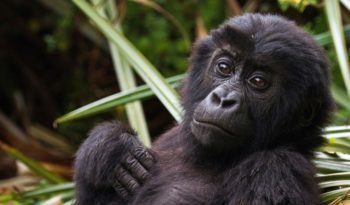
Imagine living in a place where food sources shift, predators lurk, and the weather doesn’t always cooperate. That’s the daily reality for Eastern gorillas. They have to be resourceful, adapting their behaviors and habitats just like we adapt to life’s challenges, such as a sudden downpour or a broken umbrella. Let me walk you through how these fascinating animals make it work, showcasing their resilience and unique adaptations.
Understanding Eastern Gorillas
Before diving into their survival tactics, let’s get to know Eastern gorillas a bit better. There are two subspecies: the Mountain gorilla and the Eastern lowland gorilla. Mountain gorillas live high in the misty Virunga Mountains, while the Eastern lowland gorillas inhabit the dense rainforests of the Congo Basin. Both subspecies have adapted to their environments in remarkable ways, but their habitats come with distinct challenges.
For instance, mountain gorillas deal with steep, rocky terrain and cold temperatures. In contrast, Eastern lowland gorillas face a warmer climate with thick vegetation. Despite these differences, both types share a common trait: their social structure. They live in family groups called troops, which help them find food, protect each other from threats, and raise their young.
Food Sources: Finding Nourishment in Tough Terrain
One of the biggest challenges for Eastern gorillas is finding food. They are primarily herbivores, munching on leaves, fruits, and stems, but what happens when their regular sources become scarce? Here’s where their adaptability shines.
Seasonal changes play a big role in their diet. In the rainy season, when fruits are plentiful, they feast on berries and other juicy offerings. But as the dry season approaches, they switch gears. They’ll turn to tougher plants, which often means climbing trees or foraging for bark and leaves that are less appealing but still nutritious.
Their impressive strength allows them to reach high branches and access food others can’t. Think about it like this: when your favorite restaurant runs out of your go-to dish, you might have to try something new that’s not your first choice, but it still fills you up.
Weathering the Elements: Adaptations to Climate
Harsh weather can be a significant challenge. Eastern gorillas face heavy rains, fierce winds, and chilly temperatures, especially in the mountainous regions. Their thick fur acts like a natural raincoat, keeping them warm and dry during storms.
Much like how we layer up in winter, these gorillas have adapted to their climates. They seek shelter in caves or dense underbrush during severe weather, making sure to stay protected. And here’s a neat point: during periods of high rainfall, their social groups huddle together, sharing body heat to stay cozy.
But what if the sun shines too brightly? They have that covered too! They’ll often move to shaded areas during hot days, just like how we might seek a cool spot in the park. This switching of locations helps them avoid overheating and stays hydrated with accessible water sources.
The Role of Social Structure in Survival
Eastern gorillas are highly social creatures, and their troop dynamics play a crucial role in surviving tough conditions. Living in groups allows them to share resources and protect one another.
Each troop has a dominant male, often called a silverback, whose role is not just to lead but to keep the group safe. This strong leader watches for predators like leopards and poachers. Imagine having a wise friend who always has your back during tough times—that’s what a silverback does for its troop.
Moreover, younger gorillas learn survival skills by watching older members. They pick up on where to find food and how to navigate their environment. It’s kind of like how we learn from family—passing down knowledge helps everyone thrive.
Dealing With Threats: Predators and Humans
Unexpected threats can come from other animals or even humans. Eastern gorillas have to be wary of predators like leopards, but they also face dangers from habitat loss due to human activities.
As forests are cut down for farming or logging, gorillas lose their homes. Yet, they can be resilient. When their habitat shrinks, they adapt by moving to higher altitudes or different areas, showing an incredible ability to adjust to new environments.
In the face of human threats, conservation efforts have become crucial. Local communities and organizations work tirelessly to protect gorillas and their habitats. That means creating safe zones and raising awareness about the importance of preserving these magnificent animals.
Conservation Efforts and Their Importance
Preserving Eastern gorillas goes beyond just saving a species. It’s about maintaining biodiversity and the health of entire ecosystems. These animals play a vital role in their habitats by helping disperse seeds as they eat, which promotes plant growth.
Various organizations are actively involved in the conservation of Eastern gorillas. They work on creating protected areas, combating poaching, and educating local communities about the importance of these animals. Without such efforts, the challenges that the Eastern gorillas face could lead to severe declines in their populations.
Just as we protect our loved ones and our homes, protecting gorillas ensures that future generations can appreciate their beauty and significance.
Eastern gorillas exemplify resilience in the face of adversity. Living in harsh environments, they adapt through their diet, social structures, and clever survival tactics. Each day is a testament to their strength and the intricate balance of their ecosystems.
As we learn about their lives and challenges, it’s essential to support their conservation efforts. Every little bit helps—whether it’s spreading awareness or supporting local projects. After all, if these magnificent beings can survive against the odds, surely we can do our part to ensure they continue to thrive.
